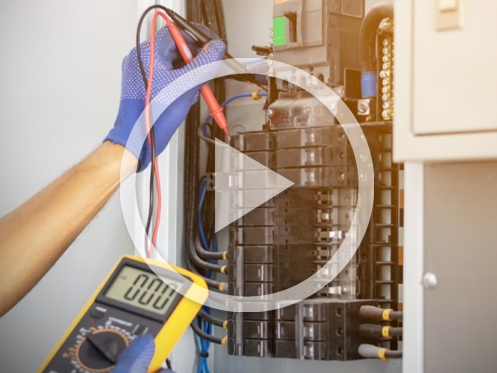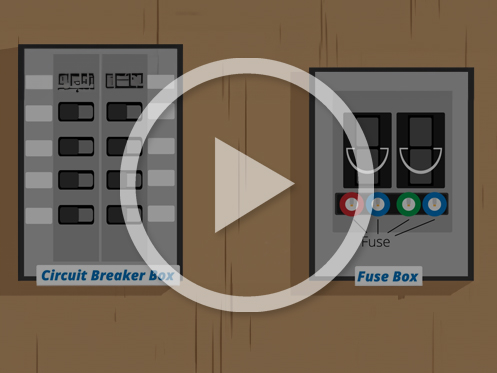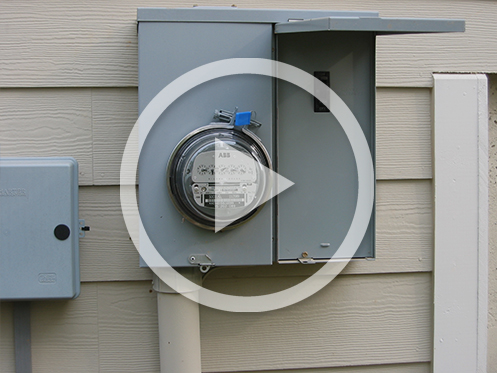Spring, with its longer daylight hours and warmer temperatures, often spur people to start spring cleaning and complete routine home maintenance. Unfortunately, one of the most critical elements to be maintained is also one of the most ignored: the electrical system.
During routine electrical system maintenance, our team prioritizes electrical code compliance and the safety of residents. We’ll explain the various steps involved in testing and maintaining your home’s electrical system for springtime, ensuring you have all the knowledge required for electrical safety.
1. Change Batteries in Smoke Detectors and Test Carbon Monoxide Detectors
Safety comes first in home maintenance. First, test both smoke and carbon monoxide detectors quite easily by finding the test button on each unit. Monthly testing is essential because detectors can be a fire or gas leak lifeline. If the alarm doesn’t work while testing it, immediately replace the batteries to guarantee normal functions.
2. Inspect Electrical Cords, Outlets, and Sockets
Following that, inspect every electrical outlet. Inspect for discoloration and singeing, as these signals can point to wiring inadequacies. Disconnect any appliance or extension cord you’re not using from the power socket, and check for rips or damage.
Old outlets are dangerous. The shift to Ground Fault Circuit Interrupter (GFCI) outlets would improve safety to a greater extent. If you encounter more complicated issues connected to wiring, contact a certified electrician for a thorough inspection and necessary corrections.
3. Check Appliances for Grounding and Surge Protection
All household appliances should be inspected beyond outlets for the right grounding and surge protection. Check that the equipment, particularly those with motors such as the fridge and air conditioner, is plugged into GFCI outlets.
Inspect appliance cords periodically for any evidence of fraying or wear and immediately deal with potential fire hazards. Through the mentioned techniques, homeowners, on the other hand, ensure the functioning of their appliances and the security of the whole electrical system from several dangers.
4. Clean Air Vents and Filters
Efficiency in heating and cooling systems is critical, not only for energy conservation but also for the electrical components’ lifespans. Cleaning air vents and regularly servicing or replacing filters ensures the best performance.
Accumulated dust and debris will negatively affect your AC and heater units, potentially leading to performance or even electrical issues. Regular cleaning, in turn, leads both to increased energy efficiency and a healthier interior air quality in your space.
5. Survey the Exterior of Your Home
Expanding your electrical maintenance checklist to the exterior is critical for a holistic approach. Examine outdoor outlet covers, check the condition of existing outdoor outlets, and repair any damages immediately.
Evaluate winter weather effects on external lighting and replace or repair where needed. Also, check that trees are trimmed as needed to prevent their branches from intertwining with the main electrical wires, reducing the likelihood of outages or accidents during storms.
6. Prepare Your Home for Power Outages and Surges
With warmer weather, the extra demand on the electrical grid can cause power outages and surges. Installing whole-house surge protection is the wise thing to do to safeguard homes from electrical variations.
Think about assembling an emergency box with must-haves like flashlights, water, and a hand-crank recharger to follow up. A backup generator can also provide an uninterrupted power supply during storms and unpredictable disasters, hence extra security for your home.
7. Schedule an Energy Audit
An energy audit is a professional assessment that can help you find energy leaks and provide critical information for addressing them. During an energy audit, Golden Rule can help homeowners save on energy, decrease utility bills, and benefit from personalized tips.
For example, adjusting the temperature of your water heater by a few degrees and using a programmable thermostat can decrease your energy consumption and help you save on energy bills. Over a year, the savings could be significant.
8. Evaluate Wiring and Electrical Panel
Your home’s wiring and electrical panel’s overall state must also be evaluated. Search for any signs of wear, corrosion, or overheating in the wiring, as those can be hazardous to fire. Look for tripped breakers or any signs of damage on the electrical panel. Make an appointment with an electrician if you spot defects or your wiring box is aging.
9. Outdoor Power Equipment and Tools
With the arrival of spring, the season for outdoor activities, you need to take a few moments to check and maintain these outdoor power equipment and tools. Verify the condition of extension cords used with outdoor tools to reduce the risk of damage to your equipment and injury to any users.
Look at the power cords of power mowers, edgers, and other types of equipment, focusing on frayed or worn parts. Conducive storage and upkeep of outdoor electric tools extend their life and avert possible safety threats.
10. Smart Home Technology Integration
If you use smart home technology, spring is a great time to evaluate your connected devices and replace those that are not functioning properly. Check firmware updates and address any shortcomings in your smart outlets, switches, and all other integrated systems.
Assess the suitability of the new devices with the existing environments and resolve the connectivity problems. Routine care of smart home automation guarantees a smooth and secure inclusion into your house’s electrical system.
11. Consider Energy-Efficient Lighting
The extra daylight hours in spring make it easy to inspect the exterior of your home. Choose from eco-friendly options like LED and CFL bulbs to save more electricity compared to old-style incandescent bulbs.
Additionally, eco-friendly bulbs have longer lifespans compared to incandescent bulbs, and they can lower your energy bills, too. During your home energy audit and routine maintenance, you can replace not just your bulbs but also fixtures. Ineffective or obsolete fixtures can be replaced with energy-saving versions that light critical areas of your home without contributing unnecessary light pollution or unwanted expenses to your power bill.
12. Prepare Recurring Inspection Documentation
Documenting your electrical maintenance can help you track what’s being done in your home and help you plan follow-up inspections and maintenance. It can also help you track your to-do list, making it possible to check off each step as you complete it. Your record can also prove valuable when it’s time to sell your home: Buyers can see at a glance the work you’ve done and how it can boost their enjoyment of the house.
13. Repairing Minor Issues Right Away
Common problems like wear and tear or aging can be addressed during maintenance before they lead to a breakdown. Technicians might also find more urgent issues requiring immediate care, such as a loose outlet plate, flickering lights, or a nonfunctional outlet. Scheduling electrical repairs to tackle problems promptly can reduce the risk of a major breakdown later.
Golden Rule urges Des Moines homeowners to prioritize the safety and maintenance of their electrical systems during the spring. We offer comprehensive heating, cooling, plumbing, and electrical services to keep your home safe and comfortable. When you need experts to repair or maintain your home’s electrical system, contact Golden Rule.


